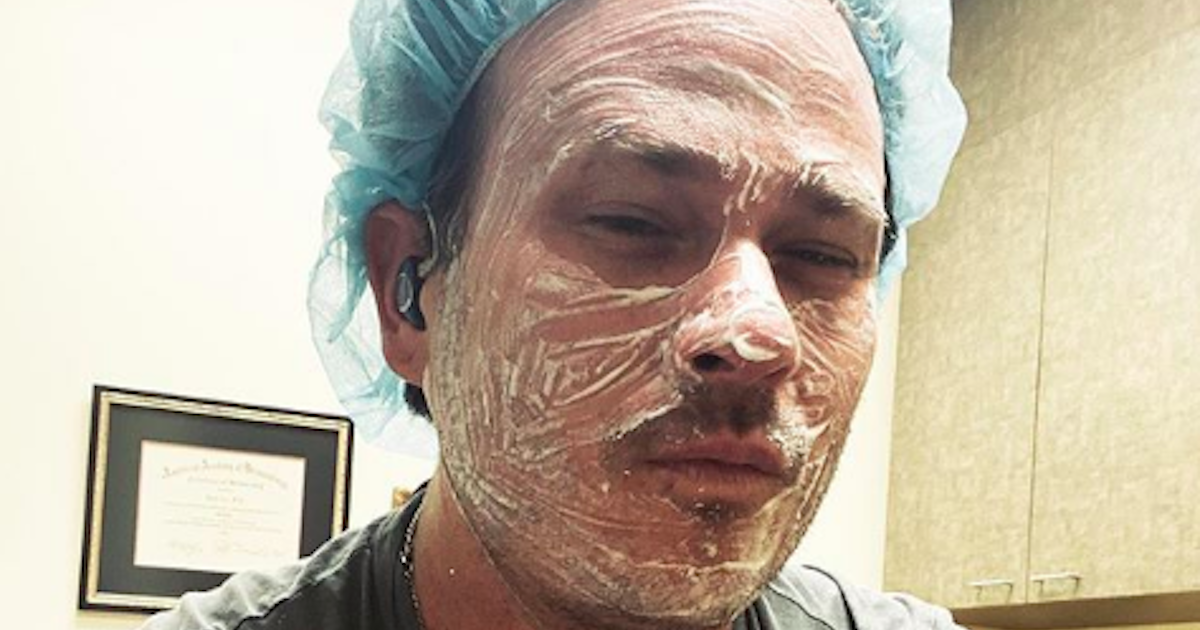Tom DeLonge's Skin Cancer Diagnosis
- Blink-182 founder Tom DeLonge underwent laser surgery to remove skin cancer on his face
- It’s unclear which type of skin cancer DeLonge was diagnosed with, but treatment for the disease has significantly progressed over the years
- A leading expert explains to SurvivorNet the treatment options and survival rates for melanoma patients
On Instagram, DeLonge, 44, shared a photo of him in an examination room sporting a blue bouffant cap and his face covered in white cream. In the caption, he casually stated that he had been diagnosed with skin cancer, and was undergoing laser surgery to remove the mark on his face. Even though a cancer diagnosis is always bad news, DeLonge’s caption somehow brought a smile to our face.
Read MoreNavigating a Skin Cancer Diagnosis
It’s unclear which type of skin cancer DeLonge was diagnosed with, but typically early stage skin cancers can be treated by surgery. There are two main types of skin cancer melanoma and basal cell carcinoma (BSC). Melanoma is a more aggressive form of skin cancer while BSC is the most common form of skin cancer among people.
Treating skin cancer has evolved over the years, and a new treatment option called Mohs surgery helps doctors tackle skin cancer with precision and more certainty. During the outpatient procedure, thin layers of skin cancer tissue will be removed until the surgeon reaches clear tissue and from there doctors will evaluate the tissue to determine whether the cancer has been successfully removed.
Related: 'Get Your Skin Checked': Hugh Jackman Posts a Skin Cancer Prevention Reminder for Fans
“As the Mohs surgeon removes the cancer, it’s mapped out, and we can go back specifically to the areas where we see cancer cells and take, again, another conservative margin or amount of tissue,” Dr. Sumaira Aasi, Director of Mohs and Dermatologic Surgery at Stanford, tells SurvivorNet. “We continue to repeat the process until the cancer is out.”
Dr. Sumaira Aasi explains how Mohs surgery makes skin cancer treatment precise
While early stage cancers are typically easier to treat, melanoma treatment has come a long way. According to Dr. Anna Pavlick, a medical oncologist at Weill Cornell Medicine, survival rates for late stage diagnoses such as stage 4 melanoma have improved dramatically over the years, and a there are a number of immunotherapy drugs available in case a person’s skin cancer diagnosis returns.
“Patients with stage 1 melanoma are cured by excision 90% of the time,” says Dr. Pavlick. “So only about 10% of stage 1 patient will ever have the risk of that coming back. Patients with stage 2 disease have about as 75% to 80% chance of being fine…Patients with stage 3 disease probably have a 50/50 chance of being OK with just a surgical resection…And finally, patients with stage 4 disease. It’s a very different world now than it was even five years ago. We’ve got wonderful medicines that impact patient survival and really have led to patients living normal, long, healthy lives after getting therapy, and even coming off therapy.”
Dr. Anna Pavlick explains survival outcomes for melanoma patients
Learn more about SurvivorNet's rigorous medical review process.


